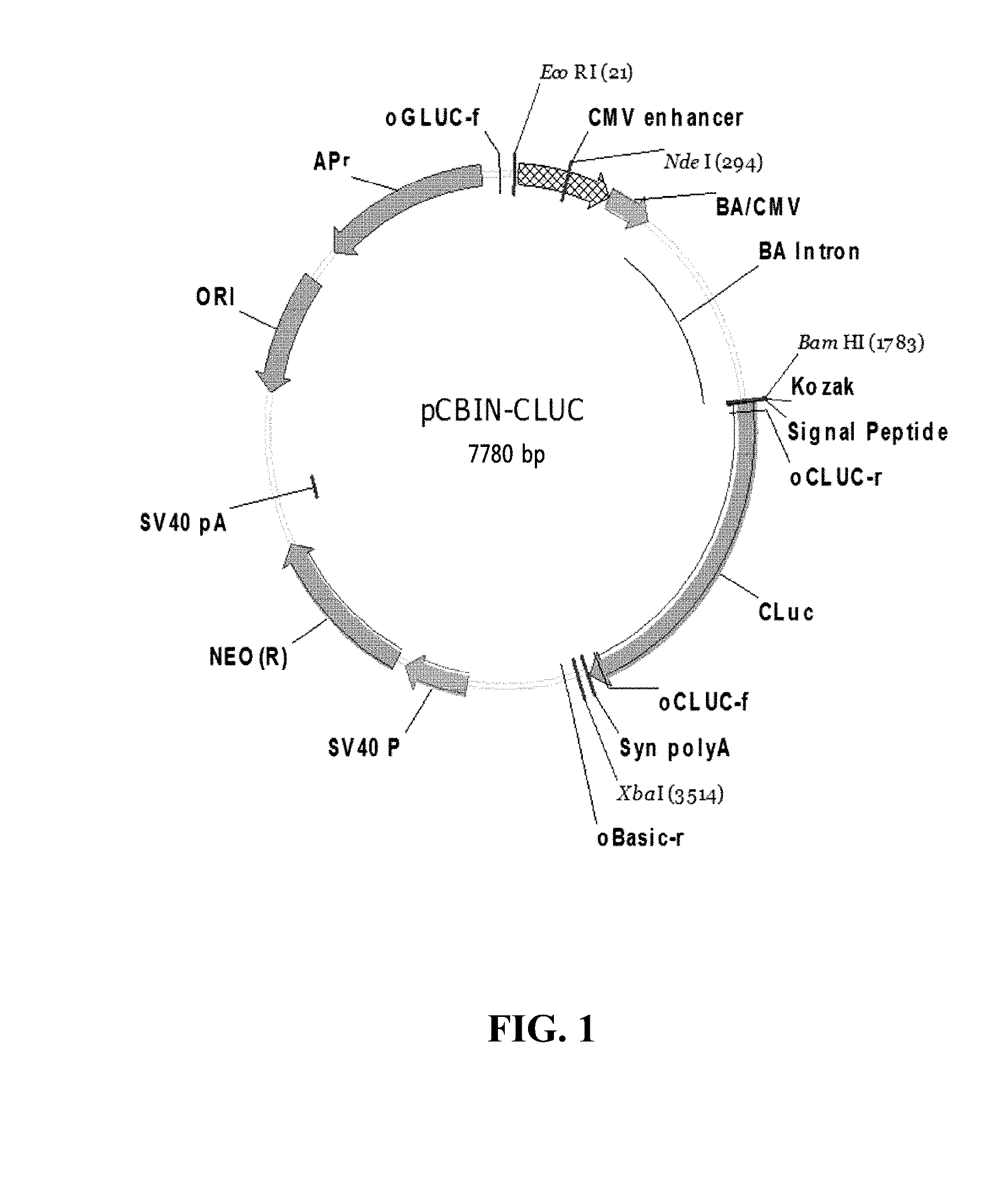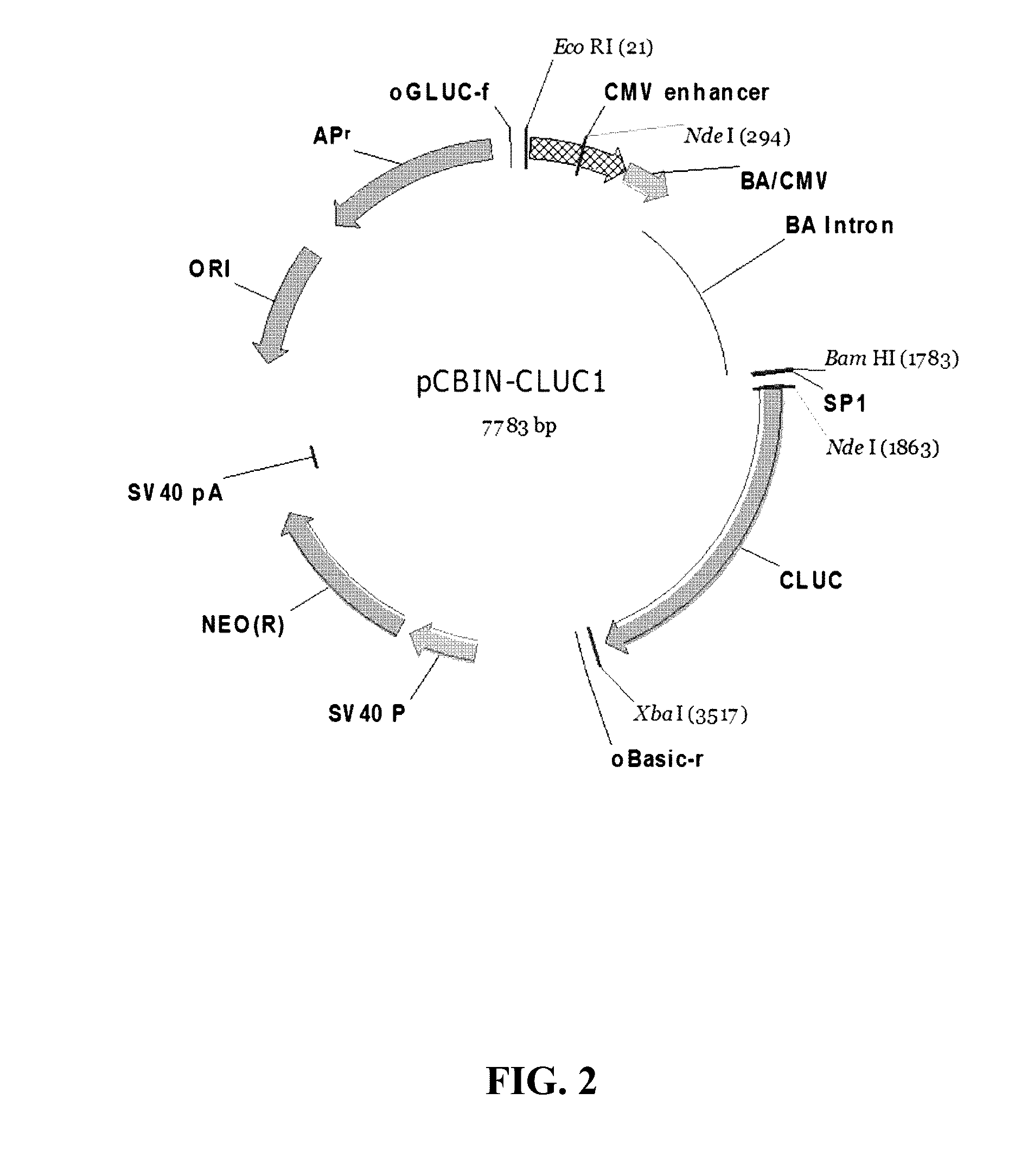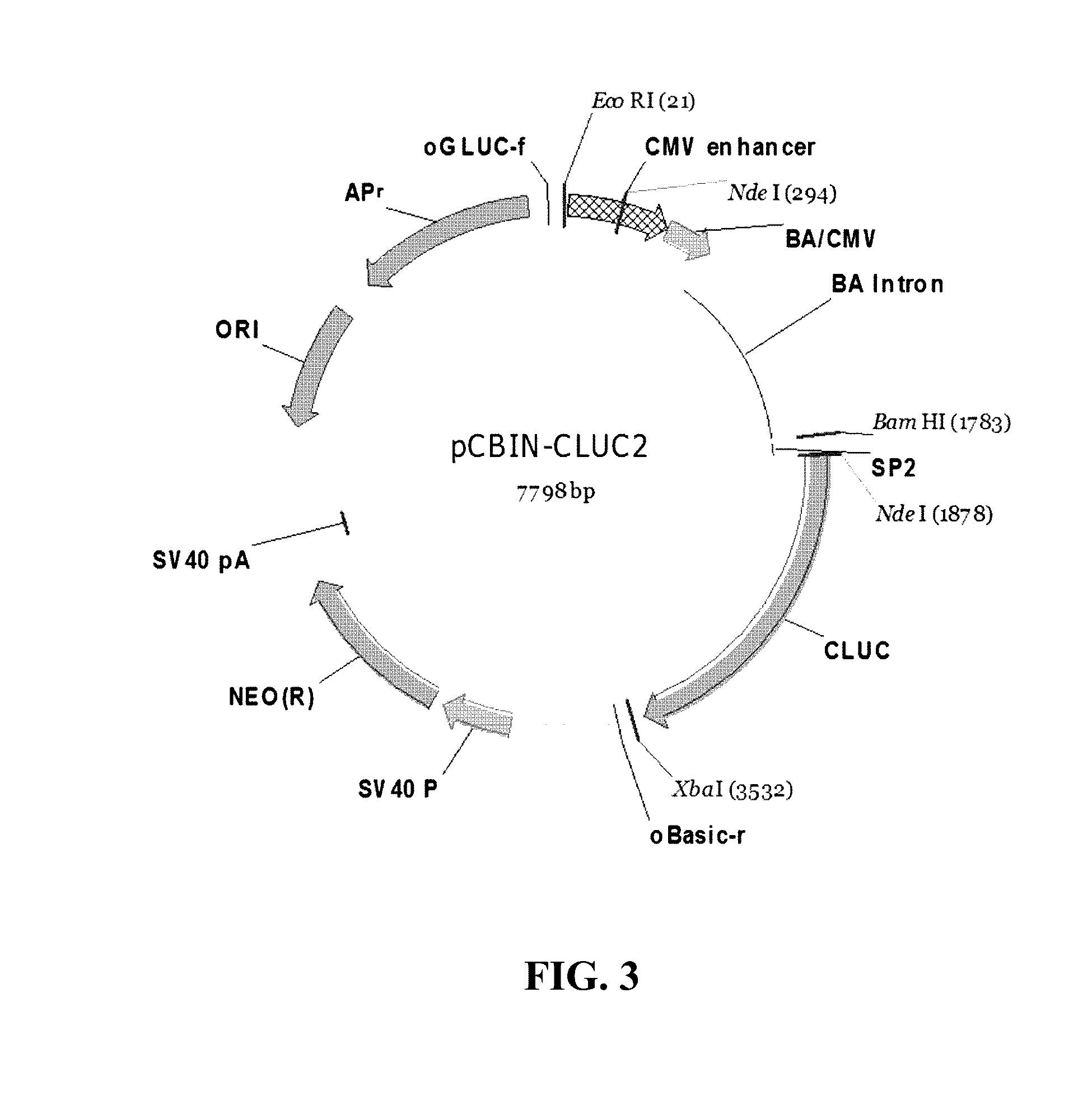A protein secretory factor with high secretory efficiency and an expression vector comprising the same
a protein secretory factor and high secretory efficiency technology, applied in the field of new protein secretion factors, can solve the problems of unsuitable prokaryotic cell secretion, many proteins used in medical treatment, research and the like are not suitable to be produced by prokaryotic cells, etc., and achieve excellent secretion effect of antibodies and a target protein remarkably increased
- Summary
- Abstract
- Description
- Claims
- Application Information
AI Technical Summary
Benefits of technology
Problems solved by technology
Method used
Image
Examples
example 1
Molecular Biology Technique
[0080]Methods generally used in molecular biology, such as restriction enzyme treatment, agarose gel electrophoresis, Gel Extraction Kit (QIAGEN), plasmid DNA purification, polymerase chain reaction (PCR), ligation of DNA fragments, and transformation of E. coli, were performed according to the methods described in the literature (Sambrook J et al., 2001 Molecular cloning: A laboratory manual, 2nd edition. Cold Spring Harbor Laboratory Press, Cold Spring Harbor, N.Y.) with minimum modifications.
example 2
Selection of Signal Sequences
2-1: Test Method
[0081]In order to identify a signal sequence for enhancing secretion during the process of expressing a heterologous protein using an animal host cell, the possibility for a high-efficiency secretory signal sequence was intended to be examined from the literature “novel gene LBFL313 related to pancreatic cancer” disclosed in Korean Patent No. 10-0954322.
[0082]Specifically, peptide sequences, presumed to have a potential as signal sequences, were selected from an LBFL313 gene, and these selected peptide sequences were compared with the conventional six signal sequences generally used as signal sequences in animal cells. In this regard, as a first comparison test, a Chinese hamster ovary (CHO) cell line widely used in the production of a recombinant protein was used as a host cell, and a secretory luciferase gene was used as a target gene. The secretion level was determined by measuring the amount of the light emitted by the oxidation of lu...
example 3
Preparation of Luciferase Plasmid Vectors
[0090]Plasmid vectors having the secretory sequences designed in Example 2-2 and having a secretory luciferase (CLUC) as a reporter gene were prepared.
3-1: Preparation of pCBIN-CLUC6
[0091]In order to construct a reporter vector having a CMV enhancer (CMVe) and a CMV / beta-actin fusion promoter (CB), a DNA fragment (1762 bp), which was obtained by treating a pTOP-BA-RL-pA vector having ‘CMVe’, ‘CB’ and ‘beta-actin intron’ (disclosed in Korean Patent Application Publication No. 10-2012-0059222) with EcoRI and BamHI, was inserted into a pCLuc-Basic2 vector (NEB, Cat#: N0317S) digested by the same restriction enzyme. The reporter vector constructed in this way has a signal sequence ‘SP6’ (pCBIN-CLUC) (refer to FIG. 1).
3-2: Preparation of pCBIN-CLUC1
[0092]A DNA fragment (80 bp), which was obtained via PCR amplification of a DNA sequence encoding a peptide sequence of a mouse IgG2 signal sequence (SP1: SEQ ID NO: 3) using two primers of SEQ ID NOS: ...
PUM
| Property | Measurement | Unit |
|---|---|---|
| volume | aaaaa | aaaaa |
| volume | aaaaa | aaaaa |
| volume | aaaaa | aaaaa |
Abstract
Description
Claims
Application Information
 Login to View More
Login to View More - R&D
- Intellectual Property
- Life Sciences
- Materials
- Tech Scout
- Unparalleled Data Quality
- Higher Quality Content
- 60% Fewer Hallucinations
Browse by: Latest US Patents, China's latest patents, Technical Efficacy Thesaurus, Application Domain, Technology Topic, Popular Technical Reports.
© 2025 PatSnap. All rights reserved.Legal|Privacy policy|Modern Slavery Act Transparency Statement|Sitemap|About US| Contact US: help@patsnap.com



